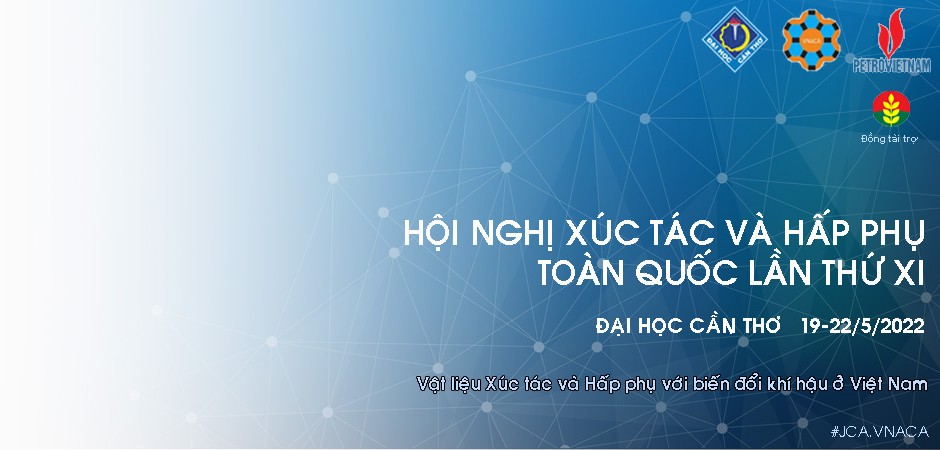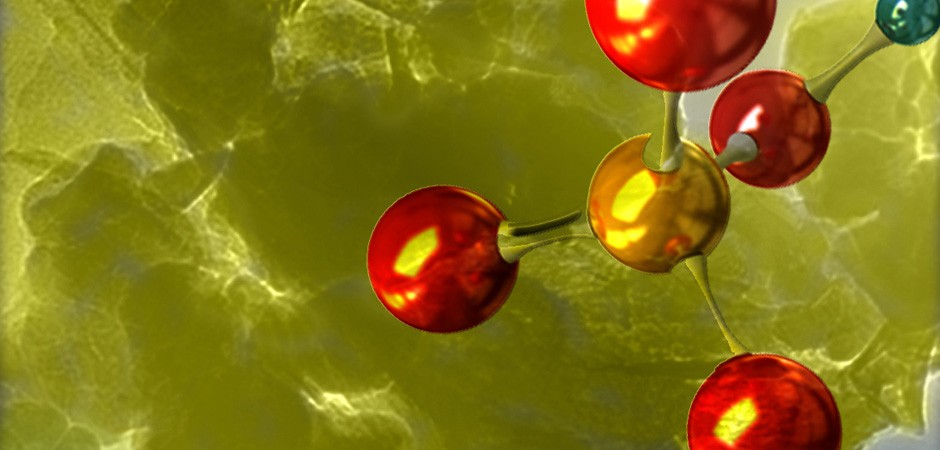- Details
- Published on 06 August 2020
Nghiên cứu khả năng hấp phụ Pb2+ dạng cột bằng hạt hydroxyapatit
Research on column adsorption of Pb2+ by hydroxyapatite granules
Lê Thị Duyên1,2,This email address is being protected from spambots. You need JavaScript enabled to view it., Lê Thị Phương Thảo1, Đỗ Thị Hải1, Võ Thị Hạnh1, Phạm Tiến Dũng1, Phạm Thị Năm3, Nguyễn Thị Thơm3, Cao Thị Hồng3, Lê Thị Sáu4, Đinh Thị Mai Thanh5,6
1 Khoa Khoa học cơ bản, Trường Đại học Mỏ - Địa chất, 18 phố Viên, Đức Thắng, Bắc Từ Liêm, Hà Nội
2 Trung tâm Phân tích và Thí nghiệm công nghệ cao, Trường Đại học Mỏ - Địa chất, 18 phố Viên, Đức Thắng, Bắc Từ Liêm, Hà Nội
3 Viện Kỹ thuật nhiệt đới, Viện Hàn lâm Khoa học và Công nghệ Việt Nam, 18 Hoàng Quốc Việt, Cầu Giấy, Hà Nội
4 Trường Đại học Quy Nhơn, 170 An Dương Vương, Nguyễn Văn Cừ, Quy Nhơn, Bình Định
5 Trường Đại học Khoa học và Công nghệ, Viện Hàn lâm Khoa học và Công nghệ Việt Nam, 18 Hoàng Quốc Việt, Cầu Giấy, Hà Nội
6 Học Viện Khoa học và Công nghệ, Viện Hàn lâm Khoa học và Công nghệ Việt Nam, 18 Hoàng Quốc Việt, Cầu Giấy, Hà Nội
ABSTRACT
Hydroxyapatite (HAp) granules were fabricated successfully from HAp powder and polyvinyl alcohol (PVA) additive by sintering method. The characterization of material was analyzed by color, durability in the water, XRD, EDX, SEM and BET. The obtained HAp granules were white, single phase of HAp, with specific surface area of 73 m2/g, size of granule about (2 × 10) mm. HAp granules were used for the removal of Pb2+ ion from aqueous solution. The effect of factors on the Pb2+ adsorption efficiency and capacity was investigated. The adsorption efficiency and capacity were 95.32 % and 4.97 mg/g respectively (for batch adsorption) at suitable condition: HAp granule mass of 6 g/L, initial concentration of 30 mg/L Pb2+, contact time 40 minutes and pH 0 5.5 at 30 ℃. The removal efficiency was about 99.7 % (for column adsorption) at suitable condition: contact time of 3,1793 min, flow rate of 20 mL/min, adsorption zone height of 4Ф, initial concentration of 30 mg/L Pb2+, pH 0 5.5 at 30 ℃.
- Details
- Published on 06 August 2020
Nghiên cứu xây dựng đường Xylop của H2S sau lớp than hoạt tính gáo dừa tẩm phụ gia
Study on building Sylop graph of H2S after activated carbon layer
Bùi Văn Tài1 This email address is being protected from spambots. You need JavaScript enabled to view it., Hoàng Trung Hiếu2
1 Viện Hóa học – Vật liệu, Viện Khoa học và Công nghệ Quân sự
2 Viện Hóa học – Môi trường Quân sự, BTL Hóa học
ABSTRACT
The Sylop of H2S vapor after the activated carbon layer were determined on the dynamic adsorption device DPS-5. The Sylop graph t = f (L) was made by the passage time of H2S after different activated carbon layers show that four different samples. The kinetic parameters was determined from experimental results dead thickness, working thickness, dynamic adsorption capacity ... Based on the experimental results of calculating the working layer thickness of the filter cartridge.
- Details
- Published on 06 August 2020
Nghiên cứu chế tạo cacbon hoạt tính từ vỏ hạt cà phê định hướng ứng dụng để hấp phụ thuốc nhuộm trong dung dịch nước
Study on the preparation of activated carbon from coffee husk toward the adsorption of dye in aqueous solution
Tạ Hữu Sơn, Lê Văn KhuThis email address is being protected from spambots. You need JavaScript enabled to view it., Lương Thị Thu Thủy
Khoa Hóa học, Trường Đại học Sư phạm Hà Nội, Số 136, Xuân Thủy, Cầu Giấy, Hà Nội
ABSTRACT
Activated carbon with high specific surface area containing large amount of mesopore was prepared from coffee husk by means of ZnCl2 activation. Physical and chemical investigation showed that the as-prepared activated carbon consists of uniform spherical shaped particles, specific surface area 1410 m2 g-1, total pore volume 0.9206 cm3 g-1 (which contain 41.43% mesopore), and contain numerous acidic and basic functional groups. Adsorption isotherm of Methylene Blue (MB) and Direct Scarlet 4BS (DS-4BS) obeyed Toth isothermal model. Monolayer adsorption capacities of activated carbon were 208.48 mg g-1 for MB and 350.67 mg g-1 for DS-4BS, respectively.
- Details
- Published on 06 August 2020
Nghiên cứu khả năng hấp phụ phenol trong môi trường nước của vật liệu Fe-MIL101
Study on phenol adsorption onto Fe-MIL101 in aqueous solution
Trần Ngọc Tuyền1 This email address is being protected from spambots. You need JavaScript enabled to view it., Nguyễn Đức Vũ Quyên1, Hà Thị Thu Hoài1, Nguyễn Thanh Tân2, Huỳnh Thị Minh Thành3
1 Khoa Hóa, Trường Đại học Khoa học, Đại học Huế
2 Trường Trung học phổ thông Nguyễn Trân, Hoài Nhơn, Bình Định
3 Khoa Hóa, Trường Đại học Quy Nhơn
ABSTRACT
In the present work, Fe-MIL101 formed by hydrothermal synthesis with ligand of H2BDC was characterized by physico-chemical mehods including X-ray diffraction (XRD), energy-dispersive X-ray spectroscopy (EDX), scanning electron microscopy (SEM) and N2 adsorption-desorption isotherm (BET). The results showed that the obtained material exhibited rather good crystallization, uniform crystals’ size and high BET surface area (736 m2.g-1). Phenol adsorption ability in aqueous solution onto Fe-MIL101 material was investigated. With adsorbent’s dosage of 4 g.L-1 and at suitable pH of 6-8, 55 % of phenol was removed from aqueous solution containing 20 mg phenol.L-1. Adsorption isotherm study confirmed Langmuir model well described the experimental data and maximum adsorption capacity was about 4,6 mg.g-1.
- Details
- Published on 06 August 2020
Tổng hợp vật liệu Fe-MIL-101 và đánh giá hoạt tính xúc tác quang trong vùng ánh sáng khả kiến
Synthesis of Fe-MIL-101 material and evaluation of photocatytic activity under visible light
Huỳnh Thị Minh Thành1 This email address is being protected from spambots. You need JavaScript enabled to view it., Trần Ngọc Tuyền2, Đinh Quang Khiếu2
1 Khoa Hóa, Đại học Quy Nhơn
2 Khoa Hóa, Đại học Khoa học, Đại học Huế
ABSTRACT
In the present work, results synthesis of Fe-MIL-101 material and evaluation of photocatytic activity under visible light. Characterization of Fe-MIL-101 was investigated by using techniques including X-ray diffraction pattern (XRD), scanning electron microscopy (SEM), energy-dispersive X-ray spectroscopy (EDX), IR spectra and UV-visible absorption spectrometer. Evaluation of the photocatalytic activity of Fe-MIL-101 material on the conversion of blue methylen solution under lighting and sunlight conditions.















